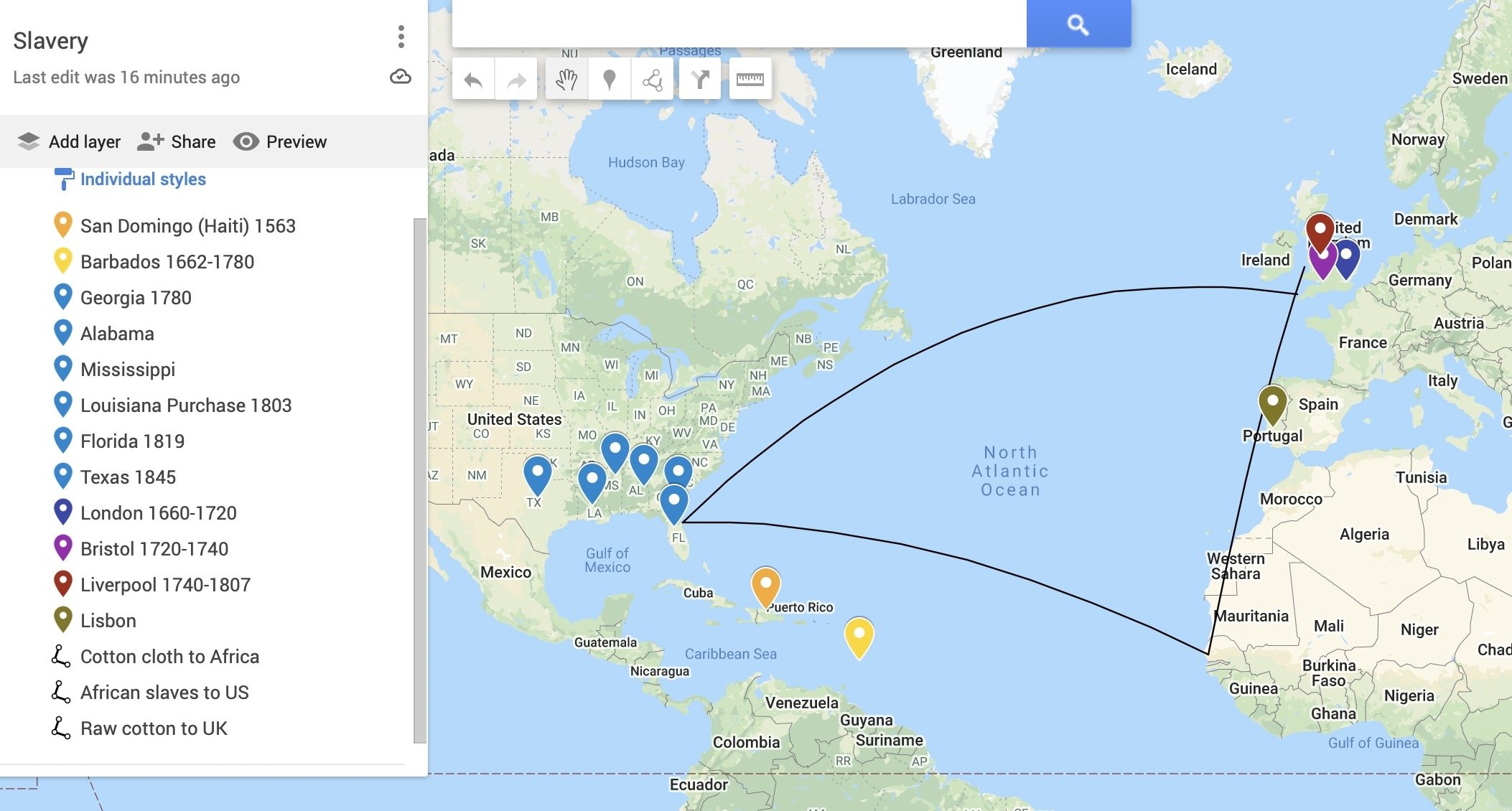Connection to Slavery
Stowage plan of a British slave ship
Don’t worry - there are no big shameful secrets to reveal and no statues of any Moffat or Robertson to be dismantled. But we were there…
Growing up I thought that slavery was something that happened in the US and never thought about how it started or how deeply implicated Britain was in the horrific story.
The triangular slave trade route
A wee history of the British cotton trade with the West Indies and the USA:
In 1563 an Englishman brought African slaves to San Domingo (Haiti). By 1780 Barbados was the largest supplier of cotton to Britain. The West Indies wore out and moved to the U.S. beginning in Georgia and moving west.
Raw cotton was shipped to Britain in jute bales woven in Dundee. Cotton was woven in the north of England, shipped to Africa and traded for slaves. The slaves were shipped to plantations in the Southern states.
Cotton was the largest traded commodity and by 1887 it composed 22% of the British economy. 3 million slaves were transported by British ships before slave trading was abolished in 1807.
The Clark family in Perthshire were connected to people with direct involvement in slavery in Jamaica.
William Clark c 1813 lived on land owned by George Kinloch M.P. who inherited a slave plantation in Jamaica from his father in 1795. He sold it in 1804 and later professed to be against slavery when he ran for office in 1831. The profit he made allowed him to build Kinloch House in Meigle.
Dundee waterfront in the 1800s
Elizabeth Clark 1863 (my great grandmother) worked in a mill in Dundee for a short time before she got married. By that time slavery had ended but the city she went to for work had been shaped by the trade. Dundee was the largest provider of slave clothing for the American south before slavery was abolished by Britain in 1833.
Jute was grown in Northern Europe and shipped to Scotland where it was processed (with whale oil to soften it) and woven into cloth. The oatmeal-colored cloth, called osnaburg, was sewn into huge bags to hold raw cotton and to make slave clothing.
The fabric was itchy: Booker T. Washington, a former slave, described it as feeling like “a hundred pin points in contact with the flesh”. Ships sailed directly from Dundee to Savannah, Georgia and Charleston, S Carolina loaded with osnaburg.
Slave clothing
If you read Lizzie’s Story you’ll see that Elizabeth Clark was the illegitimate child of Robert Neil Wedderburn 1831.
Robert’s older sister Ann Neil Wedderburn 1820 married a ship’s captain from Dundee, Alexander Marshall Brodie, and sailed with him to Savannah where she died after having a child. Her daughter Sara returned to Meigle and was raised by her grandparents. Alexander Brodie became an American citizen and joined the Confederate Army.
According to The Wedderburn Book, a published history of the family, the Wedderburns in Meigle, Perthshire were related to the more famous Wedderburns of Dundee. I’m not sure that the connection is solid (it is based on a paternity claim) but they are way more aristocratic than anyone else in our history so I’ll claim them for now. There were two brothers who owned plantations in the West Indies and one, Sir John Wedderburn of Ballindean, was involved in a notorious lawsuit involving his slave Joseph Knight.
More to come….



